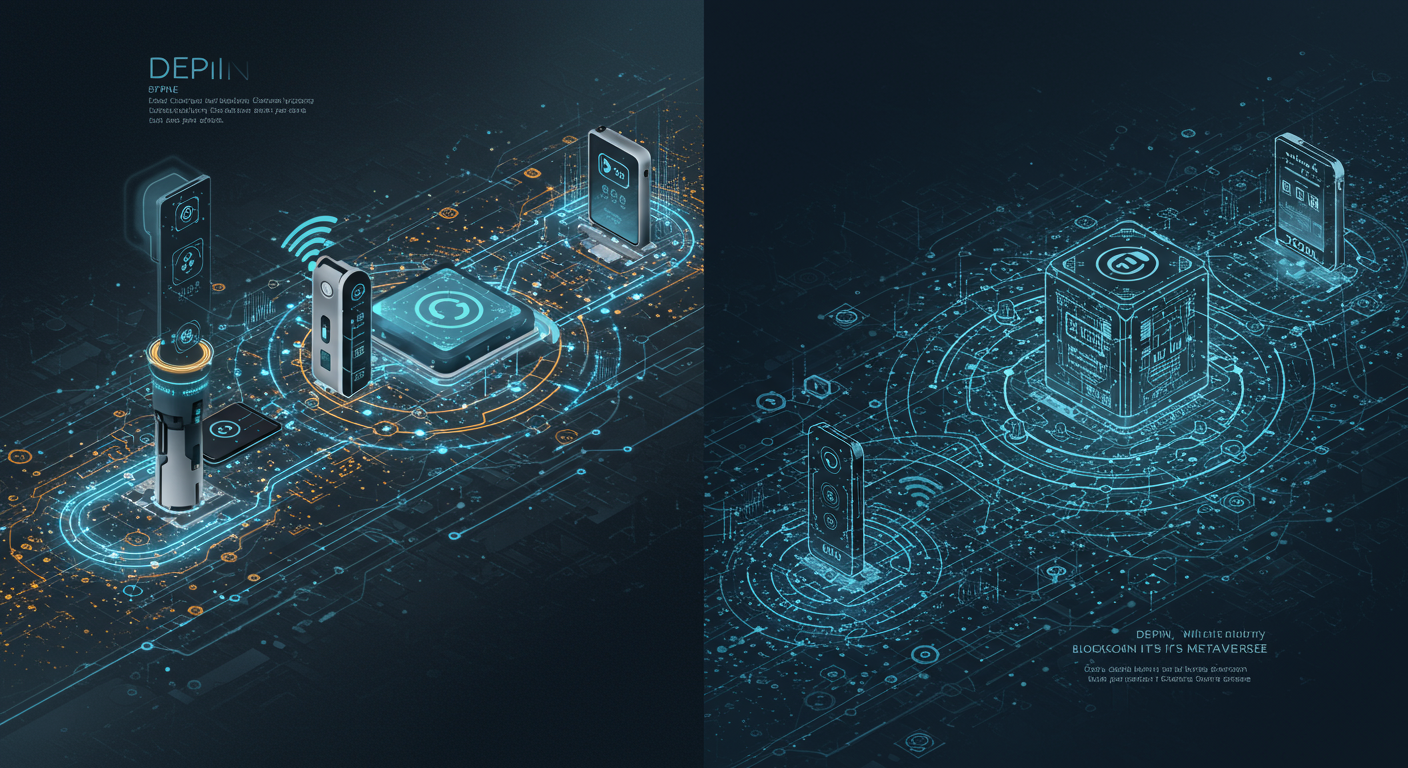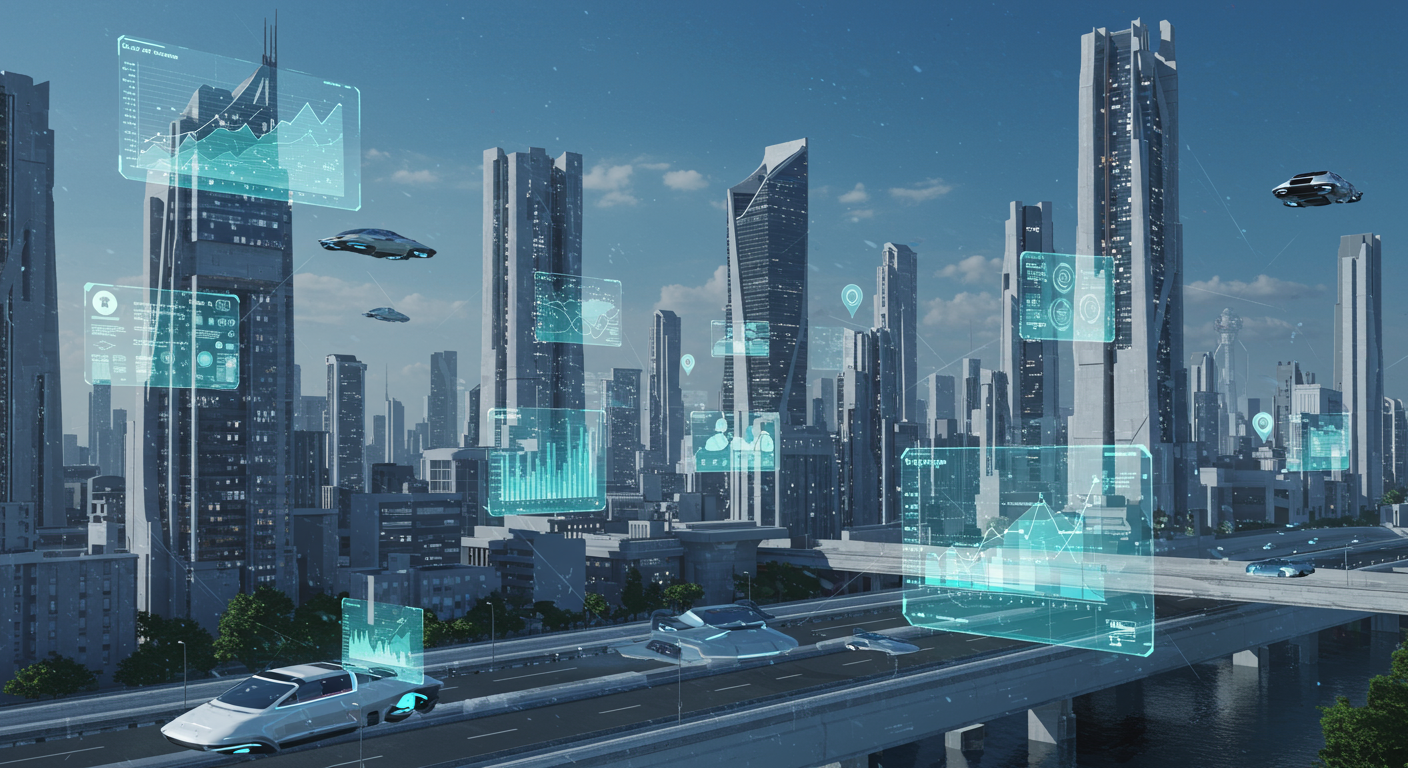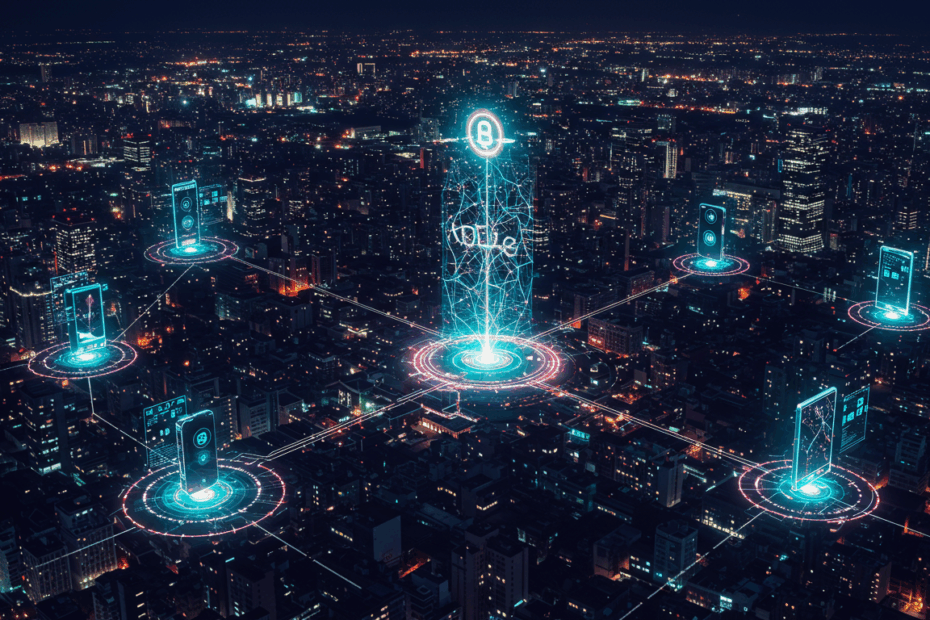Want to understand DePIN, IoTeX, & blockchain-IoT? Explore how they’re bridging the physical world with Web3!#DePIN #IoTeX #BlockchainIoT
🎧 Listen to the Audio
If you’re short on time, check out the key points in this audio version.
📝 Read the Full Text
If you prefer to read at your own pace, here’s the full explanation below.
Basic Info

John: Hey everyone, welcome to our blog post on DePIN, IoTeX, and blockchain-IoT integration. As a veteran tech journalist, I’ve seen a lot of buzzwords come and go, but this combo feels like it’s bridging the gap between the physical world and Web3. Lila, as our fresh junior writer, what struck you first about this topic from the real-time trends on X?
Lila: Hi John! For beginners like me, DePIN stands for Decentralized Physical Infrastructure Networks—it’s basically a way to use blockchain to manage real-world stuff like networks of devices, without relying on big central companies. From posts on X, it’s clear that IoTeX is a key player here, focusing on connecting IoT (Internet of Things, those smart devices everywhere) with blockchain for secure, decentralized apps.
John: Exactly, Lila. DePIN isn’t just hype; it’s about creating shared economies from idle devices, as seen in various X discussions. IoTeX, launched a few years back, has evolved into a modular platform that’s all about integrating blockchain with IoT. According to insights from X, it’s transforming from a general L1 blockchain to a DePIN-focused powerhouse, aiming to reshape multi-trillion-dollar economies by combining AI, blockchain, and smart devices.
Lila: That sounds exciting! So, for newbies, blockchain-IoT means using blockchain’s secure ledger to handle data from IoT devices, like sensors or smart home gadgets, in a decentralized way. Posts on X highlight how IoTeX is building infrastructure for this, making it easier for developers to create apps that use real-world data without central control. John, can you break down why this matters in the Web3 and metaverse space?
John: Sure thing. In Web3, which is the decentralized web powered by blockchain, and the metaverse, that virtual world where we interact digitally, DePIN provides the backbone. It’s like the real-world foundation for virtual experiences. From X trends, users are talking about how IoTeX enables things like decentralized storage and compute, which have been around but are now more feasible due to better tech. It’s not new, but it’s built different now, as one X post put it.
Lila: Got it! And from what I’ve seen on official sources like the IoTeX website and reports from Messari, IoTeX has been strengthening its position with AI and DePIN integrations. It’s positioned as the base layer for many DePIN projects, reminding some X users of early Chainlink days. This makes it a go-to for building dApps (decentralized applications) that need offline computing.
John: Well said. To sum up the basics: DePIN with IoTeX and blockchain-IoT is about decentralizing physical networks, like wireless nodes or energy grids, using blockchain for transparency and community ownership. It’s gaining traction in 2025, with X buzzing about its potential to disrupt traditional fundraising and infrastructure.
Technology pillars / architecture

Lila: Moving on to the tech side, John—what are the main pillars of DePIN and IoTeX’s architecture? From X posts, it seems like modularity is key, allowing for flexible building of decentralized infrastructure.
John: Great question. The core pillars include decentralization, where no single entity controls the network; scalability, to handle lots of IoT devices; and security, ensured by blockchain’s cryptography. IoTeX’s architecture is layered: there’s the blockchain layer for transactions, the IoT layer for device integration, and tools like W3bstream for processing real-world data into blockchain-verifiable proofs.
Lila: Oh, W3bstream sounds cool! From X, it’s described as the world’s first complete infra and toolkit for DePIN, speeding up dApp development from years to weeks. It’s used by projects like Drife and React Energy for real use cases. So, how does this tie into blockchain-IoT?
John: Blockchain-IoT in IoTeX uses something called “proof of anything”—verifying real-world events on-chain. The architecture includes nodes (computers running the network), smart contracts (self-executing code on the blockchain), and middleware like W3bstream that connects off-chain data to on-chain logic. This setup allows for things like decentralized compute marketplaces, as mentioned in X trends.
Lila: For beginners, that means you can have a network of devices sharing resources, like GPUs for AI tasks, all managed transparently via blockchain. X users point out IoTeX’s evolution to IoTeX 2.0, focusing on turning idle devices into communal economies. It’s built on a high-performance L1 chain, compatible with Ethereum tools for easy development.
John: Precisely. Another pillar is interoperability (the ability for different blockchains or apps to work together). IoTeX supports this through bridges and standards, integrating with ecosystems like Solana, as seen in DePIN Expo mentions from reputable sources like Metaverse Post. The architecture also emphasizes privacy and edge computing (processing data near the source), reducing reliance on central servers.
Lila: Edge computing is perfect for IoT, where devices need quick responses. From X, there’s talk of DePIN apps relying on distributed compute for things like data processing in crypto projects or scientific research. IoTeX’s modular design makes it scalable for metaverse apps too, where AR/VR (augmented/virtual reality) integrations could use real-time IoT data.
John: Yes, and let’s not forget tokenomics: The $IOTX token powers the network, used for fees, staking (locking tokens to support the network), and governance. Architecture-wise, it’s proof-of-stake based, energy-efficient compared to older models. Overall, it’s a robust setup for building DePIN projects that blend physical and digital worlds.
Community & ecosystem
Lila: The community around DePIN and IoTeX seems vibrant from X! John, how would you describe it?
John: It’s a mix of developers, enthusiasts, and builders passionate about real-world Web3 applications. X posts show a strong following, with users sharing deep dives on IoTeX as a top DePIN holding. The ecosystem includes projects building on IoTeX, like decentralized EV infrastructure with partners like U Power, as highlighted in recent X updates.
Lila: Yeah, there’s DePIN Union on X providing snapshots of the ecosystem, from device counts to token metrics. It feels diverse, covering wireless, compute, and energy sectors. Community events like DePIN Expo 2025, mentioned in Metaverse Post, bring people together to showcase advancements.
John: Absolutely. The community drives growth through governance and contributions. X trends reveal holders discussing long-term potential, with threads on updates and integrations. Ecosystem partners include AI agents, oracles, and metaverse projects, fostering a collaborative environment.
Lila: It’s inspiring how X users compare it to early successful projects. The community emphasizes education, with posts explaining DePIN’s role in Web3 fundraising and infrastructure. There’s a sense of shared vision for decentralizing physical assets.
John: True, and official channels like IoTeX’s X account keep everyone updated on partnerships and tools, building trust and engagement.
Use-cases & integrations
Lila: Let’s talk use cases! From X, DePIN with IoTeX is used for decentralized EV battery-swapping networks. How does that work?
John: It brings energy assets on-chain for tracking and monetization. Integrations include lifecycle management and incentives, as per X posts and Cointelegraph-like sources. Other uses: AI agents needing trusted data, edge computing without central servers.
Lila: Cool! In metaverse, it could power virtual worlds with real IoT data, like smart cities in VR. X mentions DePIN for data sensing in RWAs (Real World Assets, tokenizing physical things).
John: Yes, integrations with Solana for high-performance apps, as in DePIN Expo. Use cases extend to wireless nodes, GPU clusters, solar grids—all tokenized via blockchain-IoT.
Lila: For Web3 fundraising, DePIN-backed ICOs disrupt traditional models, per X and blog insights. It’s practical for creators building dApps with real utility.
John: Exactly, from ride-sharing like Drife to energy projects, showing blockchain-IoT’s versatility.
Future vision & potential

Lila: What’s the future look like for this tech, John?
John: Vision is a world where billions of devices form decentralized networks, powering AI and metaverse economies. X trends point to growth in on-chain innovation for physical assets.
Lila: Potential includes revolutionizing industries like energy and compute, making Web3 more accessible.
John: With integrations like DePIN x RWA, it could bridge physical and digital, creating new revenue models.
Lila: Exciting for metaverse, where immersive experiences use real-time IoT data.
John: Long-term, it’s about community-led growth, transforming idle resources into value.
Risks & limitations
Lila: But there are risks, right? Like scalability issues with many devices.
John: Yes, network congestion or security vulnerabilities in IoT. Adoption hurdles, as building DePIN is complex, per X.
Lila: Regulatory uncertainties in crypto, and market volatility affecting $IOTX.
John: Limitations include tech maturity; early DePIN underestimated complexity, as noted on X.
Lila: Centralization risks if few control nodes, and environmental concerns with energy use.
John: Always DYOR, as trends can shift.
Expert commentary / analysis
Lila: What do experts say, John?
John: From X and Messari, IoTeX is advancing despite activity dips, with strong DePIN focus.
Lila: Users see it as foundational, like early Link.
John: Analysis: Real revenue potential in DePIN, bullish for Web3.
Lila: Integrations with AI and RWAs highlight innovation.
John: Overall, a solid project with real-world impact.
Recent trends & roadmap
Lila: Recent X trends show IoTeX partnering for EV DePIN.
John: Roadmap includes IoTeX 2.0, more integrations, per Q1 2025 Messari brief.
Lila: Trends: DePIN Expo 2025, rising market cap.
John: Future: Expand ecosystem, focus on AI/blockchain convergence.
Lila: Community snapshots on X show growth.
John: Watch for updates on official channels.
FAQ
Lila: FAQ time! What is DePIN?
John: Decentralized networks for physical infrastructure.
Lila: How does IoTeX fit in?
John: As a platform for blockchain-IoT DePIN.
Lila: Is it good for beginners?
John: Yes, with tools to start building.
Lila: What’s the token?
John: $IOTX for network operations.
Lila: Future risks?
John: Volatility and adoption challenges.
Related links
Final Reflections
John: After exploring DePIN, IoTeX, blockchain-IoT through real-time insights and expert discussion, it feels like a genuine part of the next-generation Web3 infrastructure. What impressed me is its focus on real interoperability, not just buzzwords.
John: I’ll be keeping an eye on how its developer community grows and how real users respond to its tools in the metaverse and beyond.
Lila: Same here! I was surprised how many creators and builders are already experimenting with DePIN, IoTeX, blockchain-IoT. It made Web3 feel way more practical to me—not just theoretical.
Lila: I’m excited to follow its progress and maybe even test some apps built on it myself. It definitely feels like a project to watch!
Disclaimer: This article is for informational purposes only. Please do your own research (DYOR) before making any decisions.
